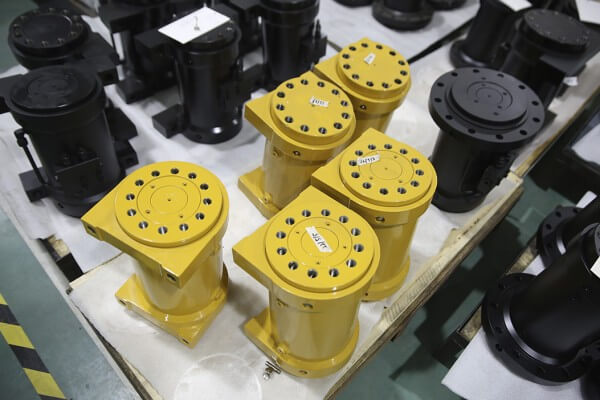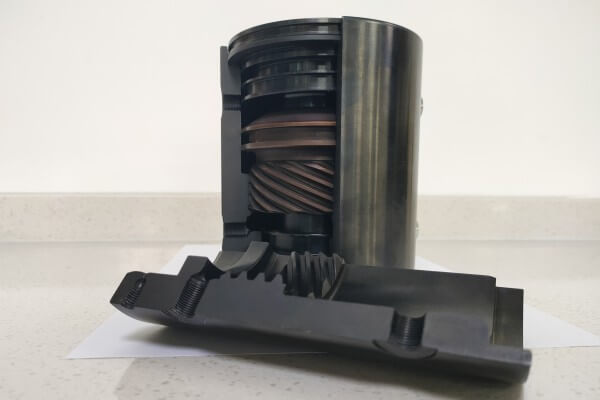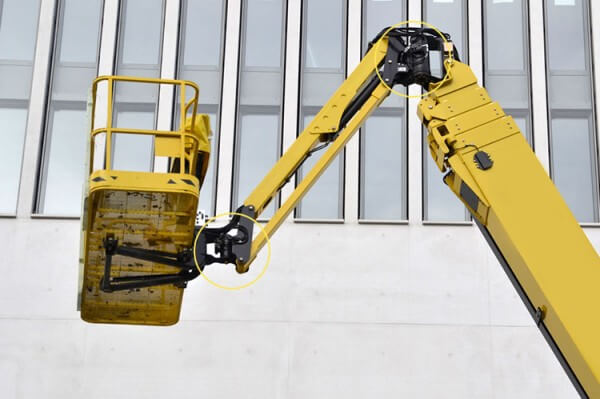A hydraulic rotary actuator can be used to control the rotation and adjustment of cranes, tower cranes, telescopic booms and other equipment to ensure the safety and efficiency of the construction process. The angle a construction machine can rotate is up to the hydraulic rotary actuator. That means, a 180 degree hydraulic rotary actuator can make it possible for the telescopic arm of an excavator to rotate in 0 to 180 degrees.
In this post, we will introduce to you the working principle, features, types and applications of a 180 degree hydraulic rotary actuator. You can follow the post step by step, or you can jump to the related section you want to learn. Let’s dive in.
What is the Working Principle?
What Are the Features of the Hydraulic Rotary Actuator?
Applications of Hydraulic Rotary Actuator
Working Principle of the Hydraulic Rotary Actuator
The hydraulic rotary actuator is a tightly assembled accessory capable of achieving high torque in a small space while still allowing precise and easy control. Its working principle is based on a system with multiple helical gears, which convert the linear motion of the piston into a rotary motion. It is designed with multiple helical gears inside. When the piston in the hydraulic cylinder is acted upon by hydraulic pressure, it will move linearly. This linear motion is converted into rotational motion through a helical gear system, thereby achieving the rotation of the cylinder. By precisely controlling the flow and pressure of hydraulic oil, precise control of the rotation angle and speed of the rotary cylinder can be achieved, enabling it to achieve 180° rotation. The longer the linear motion of the piston, the greater the rotational motion.
Features of the Hydraulic Rotary Actuator
There are many features for general hydraulic rotary actuators, such as high torque, easy to install, zero internal leakages, smooth operation, durable, fit in tight spaces, etc.
High Torque: It can provide high torque in a small space and meet various high load and high precision working requirements. The products produced by Weitai reach the max drive torque of 4,200N·m. It can meet the most customer requirements.
Easy to Install: The hydraulic rotary actuator is an integrated design. As long as the machine model is adapted, it can be installed in a short time, reducing downtime and improving work efficiency.
Fit in Tight Spaces: The hydraulic rotary actuator is designed with a compact structure. That makes it work efficient in the tight spaces. Its compact design allows it to fit into a variety of small spaces and function effectively both inside and outside machinery and equipment. In addition, the rotation angle range of the rotary actuator is also an important factor affecting its space applicability. Multiple rotation angle options (such as 90°, 180°, 270° and 360°) allow it to flexibly adapt to different space layouts and rotation needs.
Durable: To ensure the functional effectiveness and reliability of hydraulic rotary actuators, high manufacturing precision and a well-sealed housing are designed to protect the cylinder interior from dust, dirt and moisture. Therefore, they are suitable for various tough environments.
Smooth Operation: The manufacturing accuracy and assembly quality of a hydraulic rotary actuator directly affect the smoothness of its operation. High-precision manufacturing can ensure the precise fit of the internal parts of the cylinder, reducing friction and resistance, thus improving the smoothness of operation. What’s more, the viscosity and fluidity of hydraulic oil have an important impact on the operating performance of the cylinder. Selecting the appropriate hydraulic oil can ensure that the cylinder has good lubrication and fluidity during operation, and can reduce stuck or increased resistance caused by inappropriate hydraulic oil.
Types of the Hydraulic Rotary Actuator
There are many types of hydraulic rotary cylinders, and they play an important role in different application scenarios.
Telescopic
This kind of oil cylinder has a two-stage or multi-stage piston. The piston extension sequence is from large to small, while the no-load retraction sequence is generally from small to large. This design allows the cylinder to achieve a longer stroke, while at the same time having a shorter length when retracted and a compact structure. It is often used in construction machinery and agricultural machinery.
High-Precision
The design of this cylinder focuses on its high-precision features to meet application scenarios that have strict requirements on rotation angle and position.
Heavy-Duty
This type of actuator is suitable for working environments with large loads and high pressure, such as heavy machinery, excavators, etc.
Applications
A 180° hydraulic rotating actuator is widely used in many fields due to its unique working principle and characteristics.
Agricultural Machines: such as steering, boom positioning, head rotation, conveyor swing, etc.
Engineering machinery: such as excavators, loaders, etc., use 180° hydraulic rotating actuators to achieve flexible rotation and positioning of equipment and improve work efficiency.
Aerospace equipment: In aircraft landing gear, steering gear and other parts, the 180° hydraulic rotary actuator can provide stable rotation to ensure flight safety.
Conclusion
The hydraulic rotary actuator is a powerful and widely used piece of equipment. With its unique working principle, high torque, precise control, and compactness and durability, the 180° hydraulic rotating actuator plays an important role in various scenarios that require precise rotation and control.



